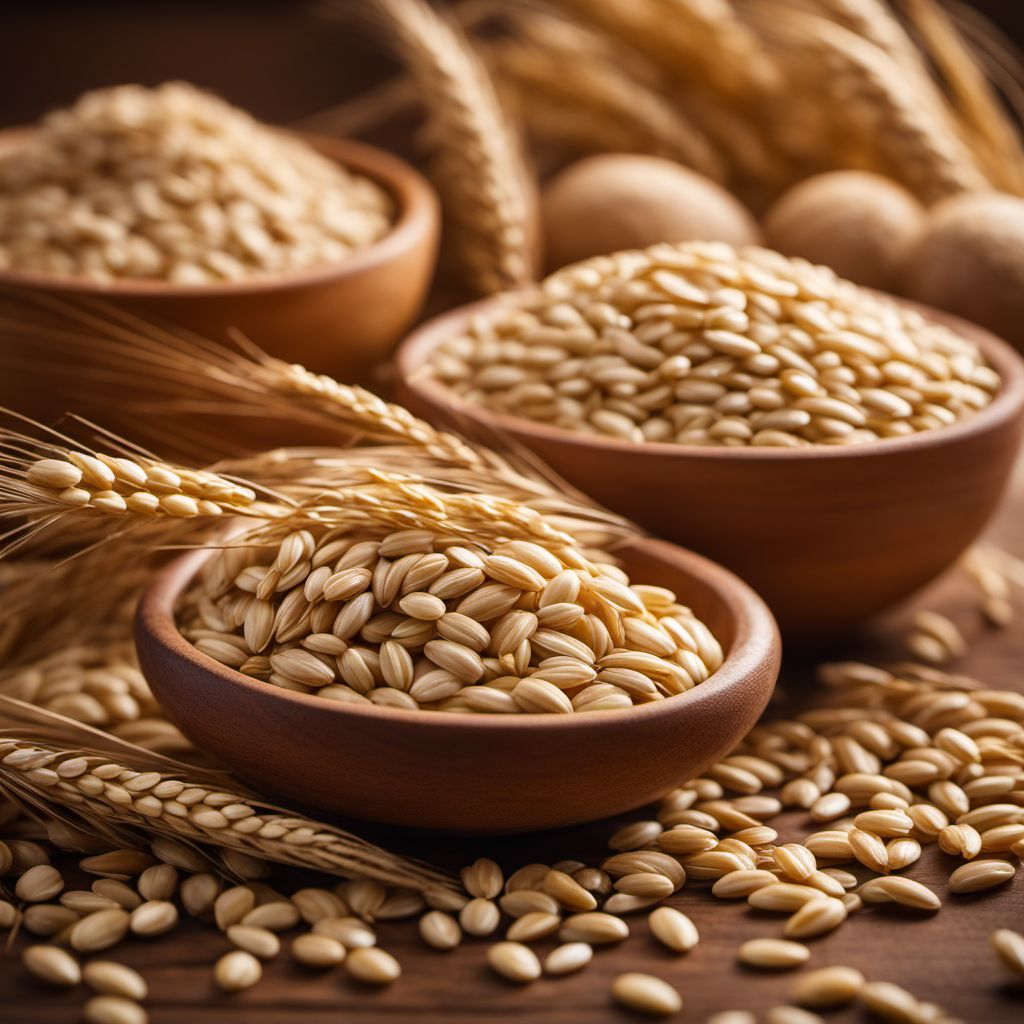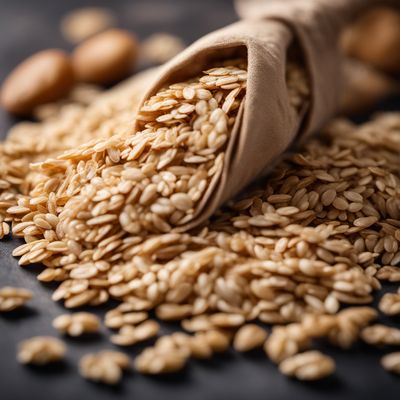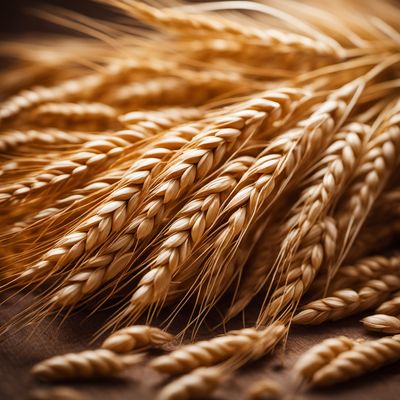
Ingredient
Barley rolled grains
The Versatile Grain: Barley Rolled Grains
Barley rolled grains are hulled barley kernels that have been steamed and then flattened. They have a chewy texture and a nutty flavor, making them a popular choice for breakfast cereals, soups, and salads. These grains are also rich in fiber and provide a good source of essential nutrients.
Origins and history
Barley has been cultivated for thousands of years and has a rich history dating back to ancient civilizations. It is believed to have originated in the Fertile Crescent and was one of the first domesticated grains. Barley has been a staple food in many cultures, including ancient Egypt and Greece. Today, it is widely grown in various parts of the world, including Europe, North America, and Australia.
Nutritional information
Barley rolled grains are a good source of dietary fiber, vitamins, and minerals. They are particularly high in fiber, providing about 6 grams per serving. They also contain essential nutrients such as manganese, selenium, and phosphorus.
Allergens
Barley rolled grains may contain gluten, making them unsuitable for individuals with gluten intolerance or celiac disease.
How to select
When selecting barley rolled grains, look for packages that are tightly sealed and free from moisture or signs of insect infestation. Opt for organic or certified products to ensure the highest quality. Additionally, check the expiration date to ensure freshness.
Storage recommendations
To maintain the freshness of barley rolled grains, store them in an airtight container in a cool, dry place, away from direct sunlight. Proper storage will help prevent moisture absorption and preserve the quality of the grains for an extended period.
How to produce
Barley can be grown in a variety of climates, but it thrives in cool, temperate regions. It can be grown in home gardens or larger agricultural settings. To produce barley, sow the seeds in well-drained soil and provide adequate water and sunlight. Harvest the grains when they are fully mature and dry.
Preparation tips
Barley rolled grains can be cooked by simmering them in water or broth until tender. They can be used as a base for breakfast porridge, added to soups and stews, or used in salads. They can also be ground into flour for baking purposes. To enhance their flavor, toast the grains before cooking. Additionally, soaking the grains overnight can help reduce cooking time.
Substitutions
Quinoa flakes, rolled oats, or wheat flakes can be used as substitutes for barley rolled grains in recipes. These alternatives provide a similar texture and can be used interchangeably in most dishes.
Culinary uses
Barley rolled grains are commonly used in breakfast cereals, porridges, soups, stews, and salads. They are also used in the production of malt beverages and as an ingredient in baked goods such as bread and cookies.
Availability
Barley rolled grains are commonly available in grocery stores, health food stores, and online retailers. They are cultivated in various regions worldwide, including Europe, North America, and Australia.
More ingredients from this category

Spelt rolled grains
The Nutty Delight: Spelt Rolled Grains

Oat rolled grains
Wholesome Oat Powerhouse

Millet rolled grains
The Versatile Millet: Unleashing the Potential of Rolled Grains

Mixed cereal rolled grains
Wholesome Breakfast Blend

Wheat rolled grains
Wholesome Delights: Exploring the Nutritional Power of Wheat Rolled Grains

Rye rolled grains
"The Wholesome Goodness of Rye: Unveiling the Versatility of Rolled Rye Grains"

Rice rolled grains
The Versatile Delight: Unveiling the Magic of Rice Rolled Grains